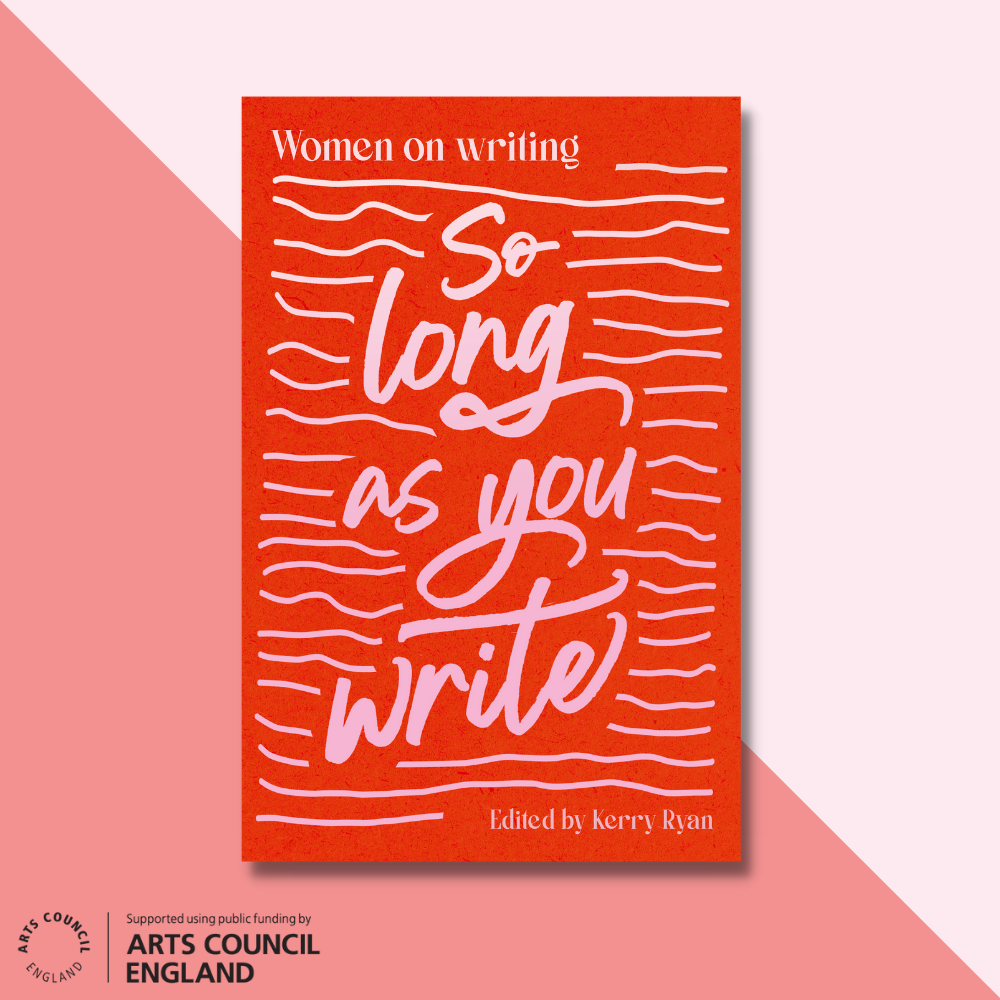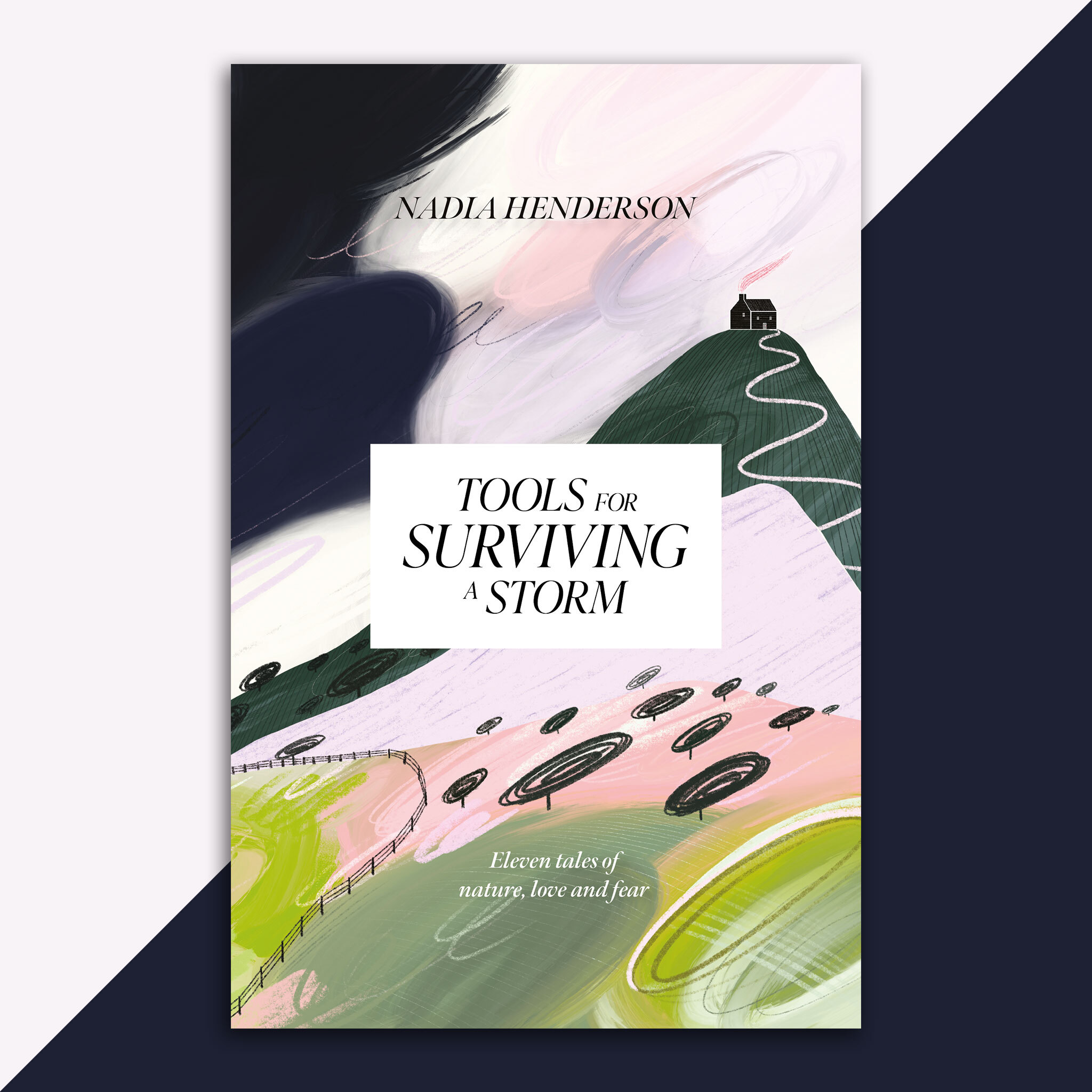CLUSTERS | In Nora Thurkle’s short story, Vera exists between natural and manmade worlds.
by Nora Thurkle
The city is haunted by these buildings. They are old bus terminals, dog racing tracks, defunct schools and leisure centres. First appears a pit in the ground – more than a pit, a cavern, threaded with broad, bright plastic pipes and pocked with muddy puddles. Then Portakabins. Stacks of timber. Skips full of rock. Plastic sheeting evenly punched with holes, embossed with the company name. Tall branded hoardings blocking everything from view. Eventually, skeletons of walls and doors and rooms, then narrow splinters of balcony space jutting from the sides like gappy rows of teeth, then windows that reflect each other infinitely.
After years of shared homes owned by non-interventionist landlords, it feels alien for Vera not to have to clean the flat from top to bottom when she moves in. No dust yet, and a bottled silence. Rather than grime lining the drawers and skirting boards, the whole place feels like it is covered in a thin layer of static electricity, like when you peel the plastic off a brand-new boxed something. Vera feels it in her hair and on her skin. Even when she turns on the shower, and she’s the first person ever to shower in this smooth, faux-marbled, windowless little box, she feels that there is a bubble around her, preventing the water from really making contact.
She dreams that she is a ghost, moving from empty flat to empty flat, crackling with newness. Polystyrene beads cling to her skin. If she wants to, she can grip the smooth bricks of the exterior walls, bending to see in through the windows. Empty cardboard boxes and discarded plastic clips line the plywood shelves of the cupboards. Everything is dry and sterile.
***
Since early in her training, Vera has been studying Armillaria ostoyae, one of the largest living organisms in existence. The fungus grows underground, hidden from sight, except for its abundant mushrooms. It’s a parasite, strangling and feeding on the roots of fir trees. At its widest, it can cover an area of almost four square miles, like in the Malheur Forest in Oregon. It is agreed to be thousands of years old.
She has discussed with Erin and Jorge, her colleagues, what constitutes a single organism. The clusters of Armillaria honey mushrooms have identical genetic material over acres and acres of land. The roots of it, the mycelium, spread below ground and put out fruiting bodies that are clones of each other. Technically it is inaccurate to call them roots – mycelium looks more like spider silk; it starts as the same sticky fluff that grows on forgotten food.
Honey mushrooms; such a sweet name. Images of cartoon bears and bumblebees. But during her training, when they visited the Armillaria in Oregon, she saw how destructive it could be. An image she can’t shake: a Douglas fir split down the trunk as if by an axe, bark peeling and curling outward, and blossoming from the rupture dozens of the flat-headed, yellow-brown mushrooms.
***
Vera leaves the flat, closing the door with a muffled thud. All noises in this building sound stifled, contained. There are not a lot of noises at the moment that she doesn’t make herself. She knows that many of the flats are still unsold and empty. Some of the buildings, nearer to the station, are empty altogether, with boards in the windows, blocked at ground level by temporary fencing. In this one, Vera knows there are other residents: the lift is sometimes on other floors and she has seen people’s post and occasional muddy footprints in the foyer. But still everything has that plasticky new smell.
Vera descends in the bright lift, presses the button to exit the building, and walks to the station through the newly laid street. Several breezeblocks make an accidental art installation outside the front door. There are repeating identical buildings, apportioned into identical flats, mirroring each other on either side of the recessed doorways. They are all square, brownish-grey, a fashionable brick. The balconies are mostly still empty and untouched, though a few are bursting with possessions that there’s not room for inside. Some hang bikes or washing or, ill-advisedly, both. At ground level there are little hedges and boxes of green carefully plotted out, a Sims landscape. There is only pavement on one side of the road. Walking through the whole development makes her think of looping, moving backgrounds in films.
At the building nearest to the station, one of the uninhabited ones, a supermarket has begun to stake out columns of labelled space on the ground floor, overhung by balconies, abutting the glass-fronted Sales Suite.
Vera climbs the steps to the station platform. She stands on one train, then another, then on the tube train, avoiding eye contact with her reflection in the door. It empties gradually as they travel west and she walks down the train, the repeating yellow poles creating that looping feeling again, like she is walking into a mirror reflecting a mirror reflecting a mirror. The train emerges above ground and she finds a seat and watches the city pass through the window.
There are more developments out this way, more upmarket perhaps than the ones where Vera lives, a little more variation in the buildings’ shapes and colours, teardrop curves and Cubist angles. There’s a market for a little more risk here, she supposes. But they still converge in clumps like upward-thrusting masses of crystals, glass panels reflecting the sun, the geometry of their sharp roofs adding to the illusion. The train trundles past one development and another, interleaved with concrete multi-storeys, garages with brightly coloured doors, older brown-brick buildings with clock faces and pointed roofs, astroturf and floodlights, parks, gardens, offices, shops. And flashes of graffiti, the same dependable style as in Moscow, as across this city, as she saw in her childhood. But always back to the new builds, patches of them everywhere.
An image she can’t shake: the mycelium of the new buildings stretching across the city in webs below the underground car parks, tangling under Tube platforms, interminably putting its shoots up through the earth.
***
The thriving of plants is enmeshed with that of fungi. Vera knows that the mycelium below the ground attaches itself to the roots of plants, supporting their hydration; one couldn’t exist without the other. But Armillaria poisons and strangles trees too, peeling back their bark like layers of paper on an advertising hoarding, like burned human skin. In places it leaves rings of dead trees visible from above. She has seen this herself, riding in a helicopter over the Malheur Forest. Patches of the deep-green conifers, dying or dead, had turned a washed-out pinkish grey, like colour rubbed out of a drawing. Localised autumn.
They were given walking access to areas closed off to the public, just her, Erin and a couple of forest rangers. Malheur is a word for bad luck, they had been told. This didn’t seem comforting as the trails they took lost shape and became harder to see and then disappeared altogether, until they relied completely on their guides. Their steps slowed as they meandered around boggy creeks and impassable foliage. There was a different smell, Vera was sure, to other forests she had been in. A musky animal smell beneath the overtone of sharp conifer. Their fieldwork, to this point, had been in forests in the south of England, tiny by comparison. Now she was primed for bears and cougars.
There were small clumps of mushrooms everywhere – impossible to tell on sight which ones were part of the large Armillaria and which weren’t. So they took samples, dozens of them, Erin digging into the ground with a small trowel to get the whole stem. Vera twisted it in waxed paper, dropped it into a clear specimen bag, and placed the bag into a section of their plastic carry case. Repeat, repeat, repeat. Everything dark and damp, for miles.
“An image she can’t shake: the mycelium of the new buildings stretching across the city in webs below the underground car parks, tangling under Tube platforms, interminably putting its shoots up through the earth.”
***
Vera and Erin sometimes work in the basement, which is full of shelving units lined by thousands of olive-green boxes and lit by fluorescent strip bulbs. They roll a ladder along the narrow aisles between shelves when they need to fetch something from higher up. It can take some thinking to find exactly what they need in these rows of green grids, especially as less than half of the information is computerised; accessing the right box, sliding it out and forward to get to the specimen, feels like solving a step in a puzzle.
There is an idea in the field that using another fungus might force Armillaria out of the areas where it is most harmful. Some tentative research has shown that competition between the species can reduce the levels of tree die-off. They call it inoculation. Their time is often consumed, though, by cataloguing and answering information requests. Jorge spends a lot of his time thinking about how mushrooms can contribute to renewable energies; Erin is often commissioned by pharmaceutical companies. And there are only the three of them left at the Fungarium. Positions have been left unfilled, tasks have been outsourced.
Erin has started to lose interest in the inoculation research, Vera can tell. ‘Armillaria has been there for thousands of years, we know that. So it’s part of the cycle. Trees die, trees grow. Repeat, repeat, et cetera.’
Vera is never certain, anyway, that she agrees with attempts to eradicate a particular species or impede its progress. (The Armillaria has been there a lot longer than mycologists have existed.) She would just like to know if they could. And she remembers those swathes of dead, colourless trees, and the neighbouring swathes of vividly alive ones.
***
She sees other residents for the first time one Saturday. She is reading when she hears doors opening and closing outside, voices and footsteps. After a few minutes she opens her front door and leans out. There is a young couple manoeuvring a sofa out of the lift towards the flat across the hallway. She says hello and they tell her their names, which she instantly forgets. She offers help, insincerely; they are too polite to accept. Two of their friends are bringing bags up the stairs for them too, sweating and swearing and puffing. Vera can see stacks of boxes inside the flat’s open door – she remembers when she moved in, alternately hovering around the removal men and trying not to get in their way, unpacking the kettle first to make cups of tea. The friends help the couple push the sofa through the doorway, manipulating it back and forth until finally squashing it through. Vera excuses herself.
She goes out to the shops and smells something garlicky and oniony cooking on the ground floor. When she returns, she notices that the balcony directly below hers has been decorated with plants. Looking now, she absorbs more of the building’s exterior, and sees that several of the balconies have signs of life where there was nothing before – begonias and nasturtiums in pots, bright hanging baskets, neat shrubs in boxy slate-grey containers. Fat bees are zigzagging between flowers. She looks higher still. There is a toddler on one of the balconies behind pigeon mesh, bouncing a tennis ball with her hand. Human habitats.
Vera has been living in the flat for months when she finally unpacks the last box of books, papers and folders. She places everything into the Ikea Billy, setting the last book at an angle so it won’t tip forward. She runs scissors across the tape on the empty box, flattens it out and slides it into a high cupboard with the others. She puts the scissors back in the kitchen drawer. She stands in the middle of the living room and breathes.
In the corner the first smattering of damp, and a spider building a web overhead. They won’t be kept out forever.
Nora Thurkle
Nora is a primary school teacher from south London. She has been writing since childhood, on and off, and is currently trying to work on some projects while her eight-month-old daughter sleeps.






